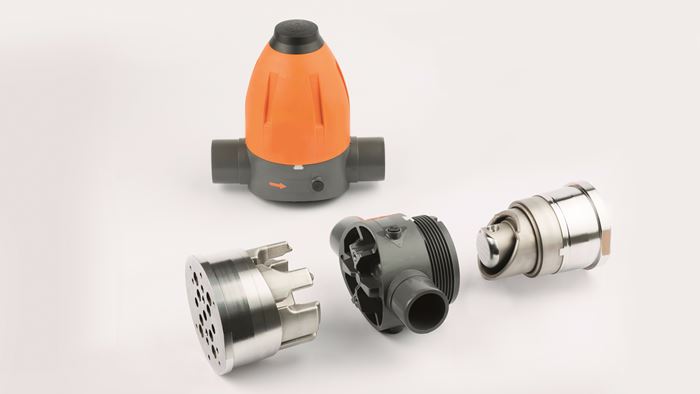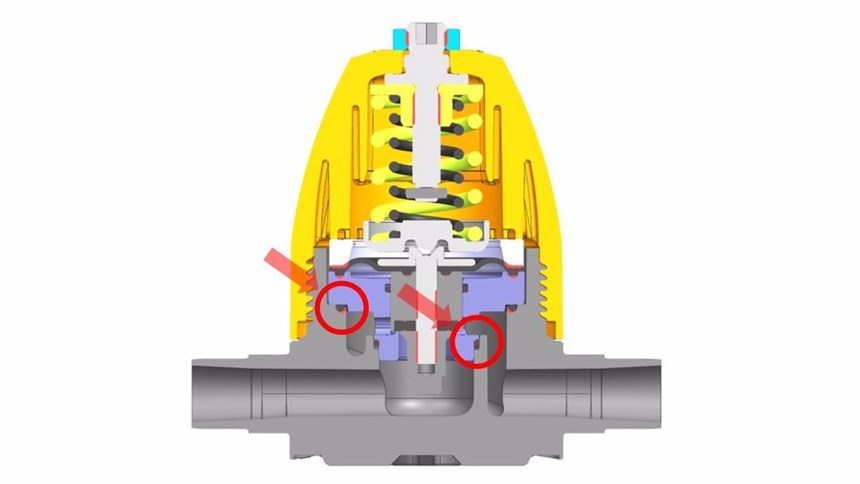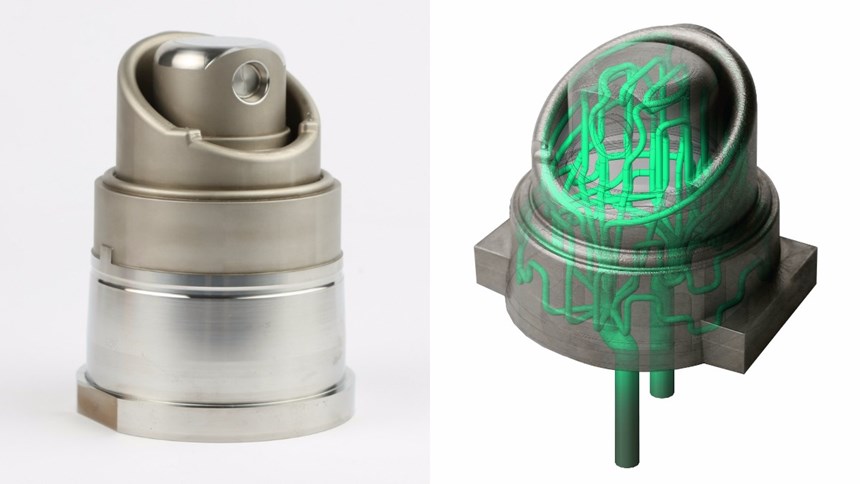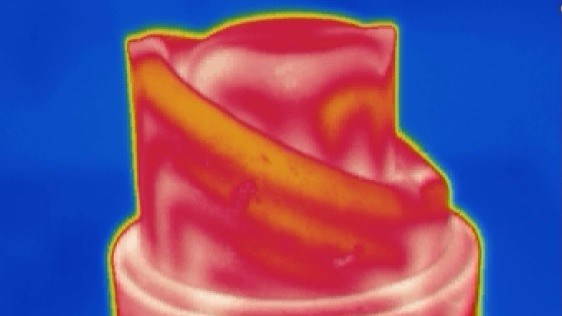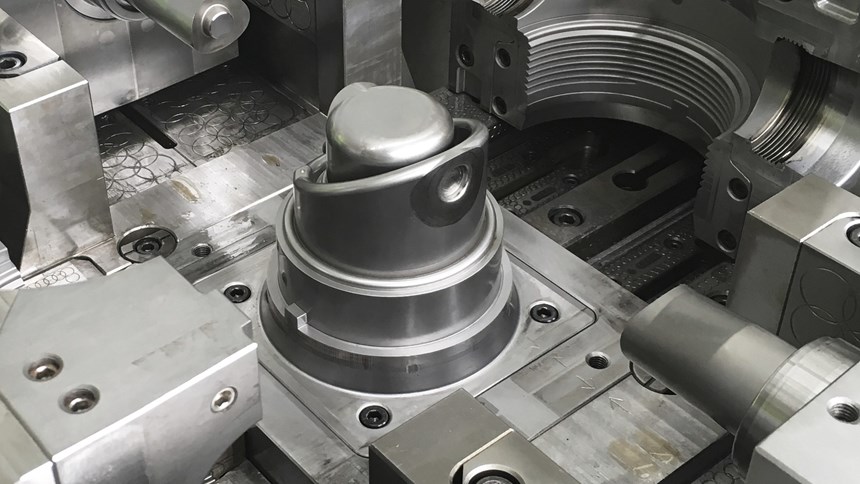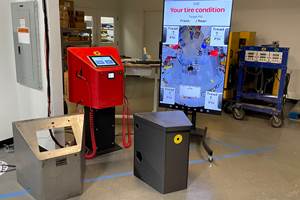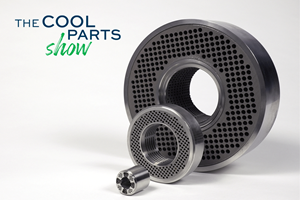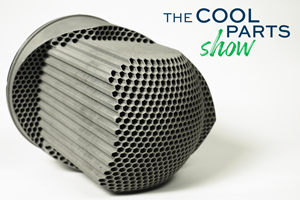AM Molds Improve Quality of Injection-Molded Plastic Parts
A case study illustrates how additively manufactured metal molds could improve the quality of molded pressure reduction valves, reducing scrap along with speeding cooling.
Conformal cooling lines produced via additive manufacturing are useful in reducing cooling times for injection molding, but that’s not their only benefit. Because cooling time makes up only a portion of cycle time, other factors—such as the quality of components and number of rejected parts—are equally, if not more important. As illustrated in a recent case study from GF Machining Solutions, conformal cooling lines can play a role here as well.
The production of the GF PRV-DN50 pressure reduction valve has benefited from the integration of conformal cooling lines in its mold. The valve, produced by GF Piping Solutions in Seewis, Switzerland, is made in a variety of materials and intended for use in the global chemical industry.
A critical quality characteristic for this part is the flatness of the weld lines near the seal seats (see Figure 2). Valve bodies with weld lines deeper than 0.01 mm and deviations larger than 0.2 mm between the two extreme values in a flatness measurement at 40 points are considered rejects. Shrinkage in the cylindrical valve body, in particular, can cause unevenness in the upper seat seal.
Variotherm Temperature Control
It is possible to better control the quality of the part through variotherm, or dynamic, mold temperature management. This strategy requires that the mold surface temperature react as quickly and homogeneously as possible to changes in the temperature of coolant flowing through the mold.
Both the cavity and core mold inserts for the valve have geometric elements that prevent conventional manufacturing technology from producing a close-contour channel geometry. Previous approaches—including producing the cavity from thermally conductive Ampcoloy and assembling the core from three conventionally produced, separate components—were unable to ensure the necessary reaction speed of the molding inserts in response to a temperature change in the coolant. Therefore, manufacturing the mold inserts additively was considered as a potential solution.
Simulating Success
GF Machining Solutions and Innovation Plasturgie Composites (IPC, Bellignat, France) worked in close cooperation to verify the design of a close-contour channel system using a series of simulations, iteratively optimizing it based on the results.
The flow volumes and speeds were assessed via fluid simulation to determine the length and diameter of the channels. Mechanical simulation helped to calculate the lifetime of the mold cores under a load spectrum typical for the injection molding tool, to determine whether the diameter, shape and position of the channel system would be able to withstand the expected loads long term. Finally, thermal simulation was used to determine whether the desired temperature distribution on the surface of the mold, as well as its reaction speed, would be sufficient for temperature management. The optimized design of the core insert can be seen in Figure 3.
On the cavity side, the material for the mold insert was changed from Ampcoloy to corrosion-resistant steel powder CX, providing hardness of 51 HRC.
To reduce manufacturing cost, a hybrid production method was chosen. The geometrically simple lower part of the both mold inserts was designed to be machined conventionally on a mill-turn center, while the complex upper part was intended to be made additively.
The mold inserts were processed with high-speed milling (performed on a Mikron Mill S 400 U) and die-sinking EDM (with an AgieCharmilles Form 200). Then, they were fitted to the existing injection mold. After setup, the simulated results were reproduced.
Improved Flow, Reduced Rejects
In testing, the flow volume of the additively manufactured core insert increased by a factor of 3.75 over the conventionally manufactured original. At the same time, the insert maintained a more homogeneous surface temperature which stabilized in less than 20 percent of the time taken by the original. The weld lines in both seal seats, as well as the shrinkage in the cylindrical valve body, were almost entirely eliminated.
According to GF Machining Solutions, the redesigned molds resulted in an almost complete elimination of reject parts, and cycle times reduced by 10 to 15 percent.
Related Content
Faster Iteration, Flexible Production: How This Inflation System OEM Wins With 3D Printing
Haltec Corp., a manufacturer of tire valves and inflation systems, finds utility in 3D printing for rapid prototyping and production of components for its modular and customizable products.
Read MoreReplique Enhances 3D Printing Material Hub, Expands Production Network With Traditional Technologies
Formnext 2024: Replique has also collaborated with several health care providers to develop 3D printed innovations such as a fully 3D printed containment valve and new rollator with a 3D printed frame.
Read MoreVariable Resistance Valve Trim Achieves Lead Time Reduction Through AM: The Cool Parts Show #69
Baker Hughes is realizing shorter lead times and simplified manufacturing through powder bed fusion to produce valve trims previously assembled from many machined metal parts.
Read More3D Printed Valve Part Protects Pipes by Preventing Cavitation: The Cool Parts Show #56
The Fisher Cavitrol Hex trim from Emerson divides the fluid flow into numerous parallel streams thanks to geometry made possible through additive manufacturing.
Read MoreRead Next
Bike Manufacturer Uses Additive Manufacturing to Create Lighter, More Complex, Customized Parts
Titanium bike frame manufacturer Hanglun Technology mixes precision casting with 3D printing to create bikes that offer increased speed and reduced turbulence during long-distance rides, offering a smoother, faster and more efficient cycling experience.
Read MorePostprocessing Steps and Costs for Metal 3D Printing
When your metal part is done 3D printing, you just pull it out of the machine and start using it, right? Not exactly.
Read MoreAlquist 3D Looks Toward a Carbon-Sequestering Future with 3D Printed Infrastructure
The Colorado startup aims to reduce the carbon footprint of new buildings, homes and city infrastructure with robotic 3D printing and a specialized geopolymer material.
Read More
.jpg;width=70;height=70;mode=crop)
